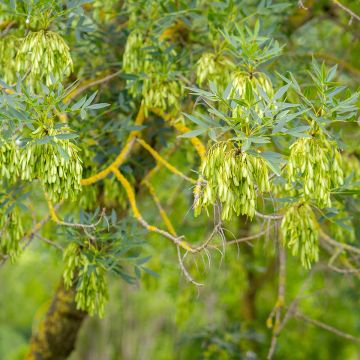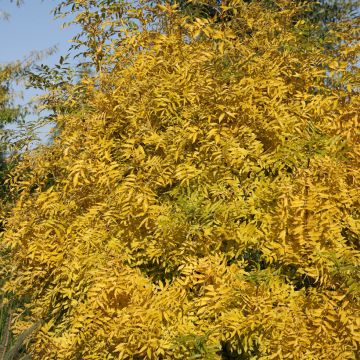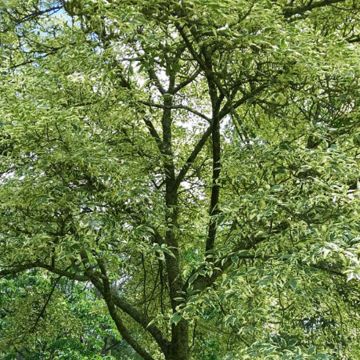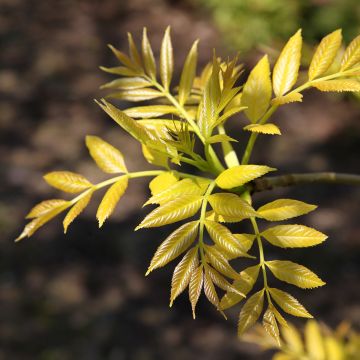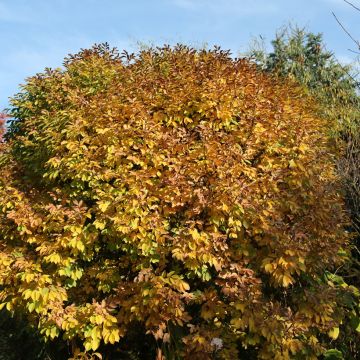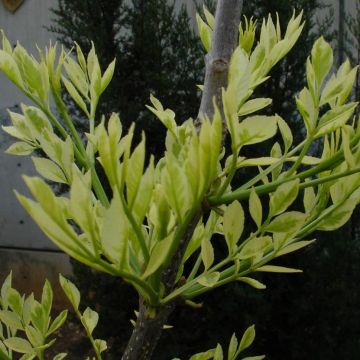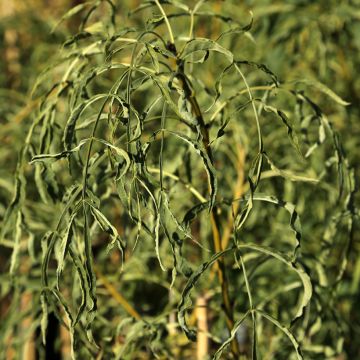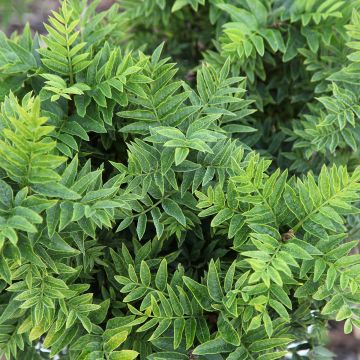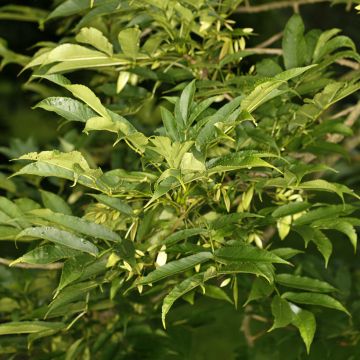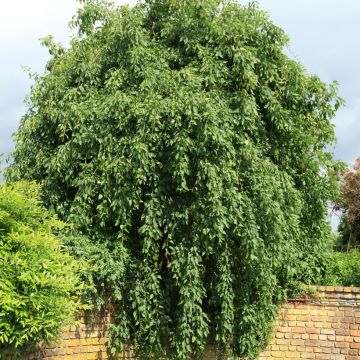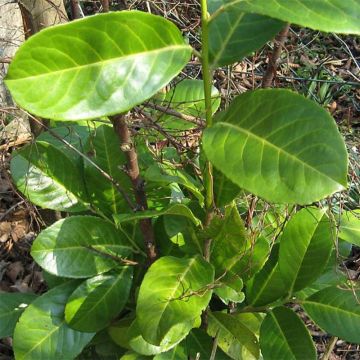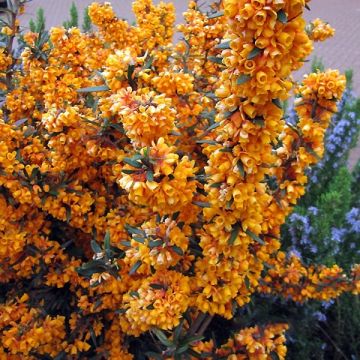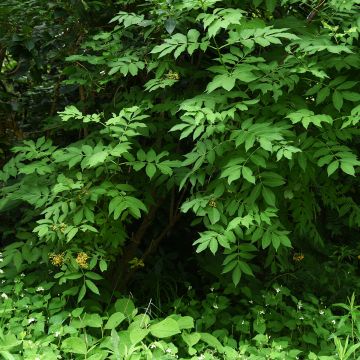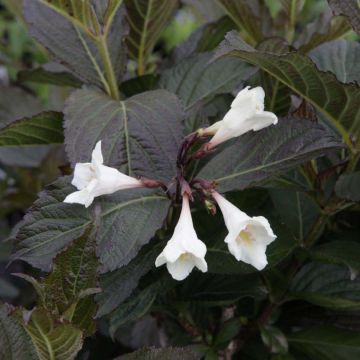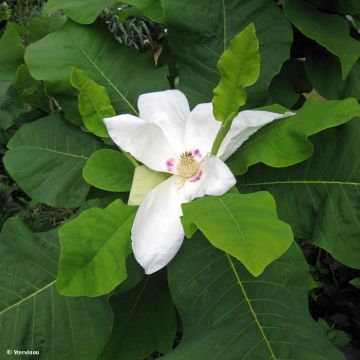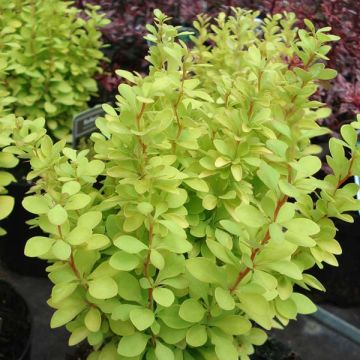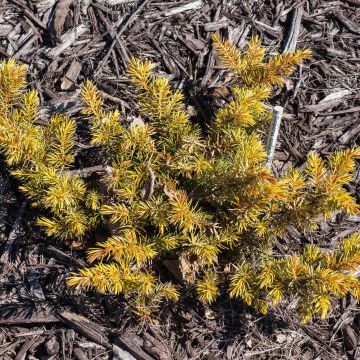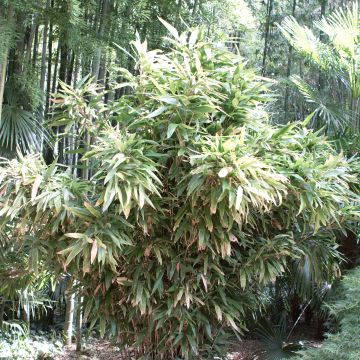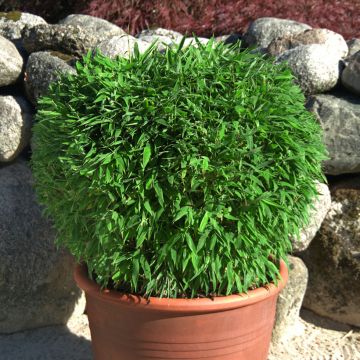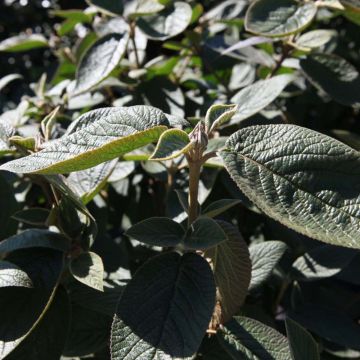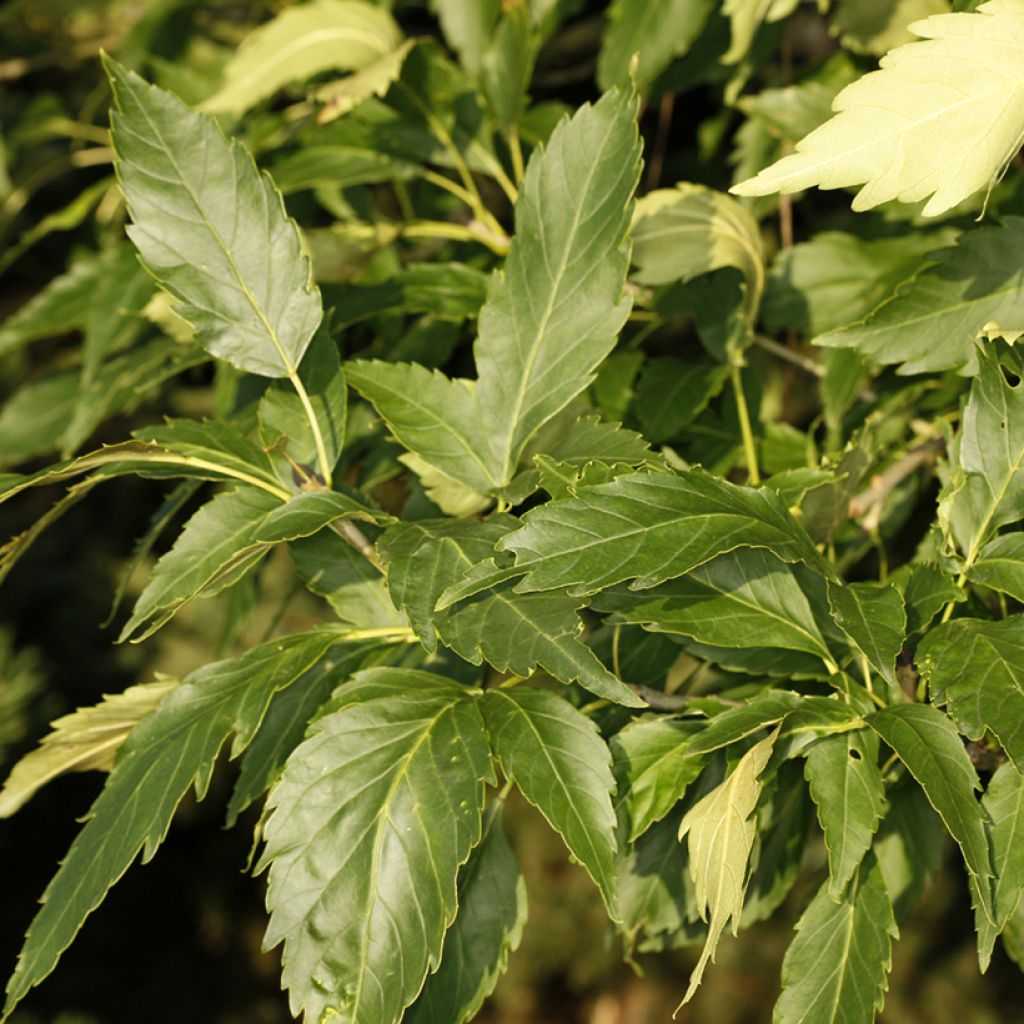

Fraxinus excelsior Zygmunt Krasiński - Fresno norteño
Fraxinus excelsior Zygmunt Krasiński - Fresno norteño
Fraxinus excelsior Zygmunt Krasiński
Fresno norteño, Fresno de hoja, Fresno común, Fresno europeo, Fresno negro
Este artículo no puede enviarse al país seleccionado
Artículos grandes, gastos de envío a partir de 6,90 €
Más información
País de entrega:
-
Alemania
-
Andorra
-
Austria
-
Bulgaria
-
Bélgica
-
Chequia
-
Chile
-
Chipre
-
Croacia
-
Dinamarca
-
Eslovaquia
-
Eslovenia
-
España
-
Estonia
-
Finlandia
-
Francia
-
Grecia
-
Hungría
-
Irlanda
-
Islandia
-
Italia
-
Letonia
-
Lituania
-
Luxemburgo
-
Malta
-
Mónaco
-
Países Bajos
-
Polonia
-
Portugal
-
Rumanía
-
Suecia
-
Suiza
Programa tu fecha de entrega,
y elige tu fecha en la cesta
24 meses de garantía en el desarrollo de esta planta
Más información
Garantizamos la calidad de nuestras plantas durante un ciclo vegetativo completo, y sustituiremos a nuestro cargo cualquier planta que no se recupere en condiciones climáticas y de plantación normales.
Artículo voluminoso: entrega a domicilio únicamente con un coste de 6,90 € por pedido..
Entrega a domicilio exprés en 24-48 horas: 8,90 €.
¿Esta planta es adecuada para mi jardín?
Crear mi perfil Plantfit →
Descripción
El Fraxinus excelsior 'Zygmunt Krasiński' es un Fresno norteño que destaca por sus hojas simples o compuestas de solo tres folíolos. Es un árbol de gran tamaño y elegante presencia, con brotes negros que contrastan bien con las ramas grises. Su tronco recto sostiene una corona más o menos cónica que proporciona una sombra ligera. El follaje amarillea más o menos en otoño antes de caer al suelo. No teme en absoluto las heladas severas, adaptándose a la mayoría de los suelos frescos, este Fresno puede ser plantado de forma aislada, en el borde de un cuerpo de agua o en segundo plano de un gran macizo.
El Fresno es miembro de la familia de las Oléaceas, que debe su nombre al Olivo (Olea) y agrupa varios géneros ornamentales, como los Lilos, el Phyllirea o incluso el poco conocido Forsitia blanca (Abeliophyllum distichum). Se cuentan alrededor de sesenta y cinco especies de Fresnos, que en su abrumadora mayoría se reconocen por sus hojas imparipinnadas (compuestas por folíolos en número impar, debido al folíolo terminal), opuestas o a veces agrupadas de tres en tres. Fraxinus excelsior es nuestro Fresno común, extendido desde Europa hasta el Cáucaso y hasta el norte de Anatolia. De crecimiento rápido, es un árbol de gran tamaño que puede superar fácilmente los 30 m de altura y que crece en bosques y cerca de lagos y cursos de agua. Tiene hojas compuestas por 7 a 13 folíolos que miden de 20 a 40 cm de longitud. Su floración verde amarillenta muy discreta aparece en abril, antes de la brotación de las hojas.
El Fraxinus excelsior 'Zygmunt Krasiński' es una de las raras variedades de follaje simple, o débilmente compuesto, como el Fresno 'Diversifolia'. En este árbol, las hojas son alargadas y simples, o están formadas únicamente por tres folíolos. El ejemplar original fue encontrado en un parque en Opinogóra, Polonia, residencia del padre de Zygmunt Krasiński, así como de su hijo enterrado allí. Z. Krasiński fue un poeta y escritor del siglo XIX, gran nombre del romanticismo, y también ahijado de Napoleón Bonaparte. Aparte de su inusual follaje, este Fresno es bastante fiel a la especie botánica. Forma un gran árbol con una copa más o menos cónica a redondeada, sostenida por un tronco recto, cubierto de una corteza grisácea que se agrieta con el tiempo. Los brotes negros son bien visibles en las ramas grises y son característicos de la especie. Las hojas de un verde bastante oscuro se reducen a un solo folíolo sobredimensionado, muy alargado y que puede alcanzar los 15 cm de longitud. O bien, están compuestas por tres folíolos, es decir, compuestas por tres folíolos, una configuración poco común en los árboles, que se encuentra especialmente en el Orme de Samarie (Ptelea trifoliata). En otoño, dependiendo del clima y del suelo, se vuelven más o menos amarillas antes de caer, lo que aporta luz al jardín al final de la temporada. La floración, en cambio, es demasiado insignificante para ser ornamental. Aparece muy temprano, en abril, en forma de capítulos de pequeñas flores femeninas de un verde amarillento, o masculinas teñidas de púrpura y que se vuelven amarillas después de la polinización. El fruto que resulta de la fecundación y que se llama sámara tiene forma de lanza, verde amarillento al principio y luego se vuelve marrón. Reunidos en racimos, estos frutos tienen poco interés decorativo, al igual que las inflorescencias.
Fácil de cultivar en la mayoría de los suelos frescos, muy resistente al frío, este Fresno 'Zygmunt Krasiński' interesará especialmente a los amantes de la rareza que dispongan de un gran terreno. Para sorprender, acompáñelo con otras plantas inusuales, como el pequeño Encina de hoja de Almez (Quercus myrsinifolia), que intrigará a más de uno. Es difícil reconocer un Roble en este pequeño árbol de porte extendido y hojas estrechas, apenas dentadas en los bordes, que se vuelven moradas en otoño. El Arce de hojas de Carpe (Acer carpinifolium) también confunde con sus hojas que imitan realmente las del Carpe, y que adquieren hermosos tonos otoñales. Solo sus frutos característicos de los Arces (di-sámaras) delatan su pertenencia a este género de árboles. Y para completar su escena desconcertante, plante un Sauce de hojas de Romero (Salix elaeagnos 'Angustifolia'), otra trampa botánica que engañará a más de uno con su follaje extremadamente fino, muy elegante y de un hermoso verde oscuro. Esta vez, serán los gatitos amarillos los que alertarán a los observadores perspicaces...
. Plántelo de forma aislada en un césped para disfrutar de su silueta característica, o incluso integrado en un macizo de plantas variadas. En este caso, rodearlo de plantas bajas para no obstaculizar su desarrollo y permitirle adoptar su atractivo porte. Bajo su sombra protectora, podrá instalar un tapiz de Pachysandra terminalis 'Variegata', un cubresuelos persistente con follaje verde oscuro delicadamente marginado de blanco. El Evónimo de Europa, o Euonymus europaeus, de aspecto un tanto salvaje, también se combinará bien con su Fresno y creará un magnífico contraste de colores cuando su follaje se vuelva morado y rojo en otoño. Además, produce frutos rosados y naranjas muy decorativos (pero cuidado, también son tóxicos). Y para aportar colores en invierno a su escena, adopte el Cornus stolonifera 'Flaviramea', un Cornejo con madera amarilla muy decorativa que podrá plantar delante de su Fresno sin riesgo de estorbarlo, ya que este arbusto no supera los 2 m de altura y es mejor podarlo corto cada año para favorecer el crecimiento de nuevos brotes luminosos.
o Fresno común, es un gran árbol muy común en nuestros bosques franceses. Es reconocible por sus yemas florales negras aterciopeladas y sus hojas lanceoladas, verde oscuro, que se vuelven amarillas en otoño. De crecimiento rápido, este árbol adopta con los años una elegante porte, compuesta por un tronco muy vertical que sostiene una copa ligera y alargada cuya sombra se aprecia en verano. Muy resistente al frío, de fácil cultivo en un suelo cualquiera pero profundo y fresco, lucirá espléndido aislado en un gran jardín o en el borde de un cuerpo de agua.
El Fraxinus excelsior, comúnmente conocido como Fresno común o Fresno elevado, es un árbol de la familia de las oléaceas, al igual que el olivo y el lilo. Es nativo de Europa, Escandinavia y Rusia, donde es frecuente en las orillas y riberas de los cursos de agua, así como en los bosques.
La forma de este Fresno es erguida. Desarrolla un tronco vertical, bien despejado, coronado por una copa de forma redondeada a alargada, bastante cerrada cuando el árbol es joven, abriéndose con los años. En la madurez, esta copa es aireada, de aspecto ligero y la corteza que cubre el tronco se vuelve gris, profundamente agrietada y escamosa. Tiene un crecimiento bastante rápido, alcanzando generalmente entre 30 y 40 m de altura y 20 m de envergadura en la madurez. El follaje, caduco y de gran finura, está compuesto por hojas de 9 a 13 folíolos muy estrechos y lanceolados, de 5 a 12 cm de longitud. De color verde oscuro, se vuelven amarillas en otoño. La floración tiene lugar en primavera, antes de la aparición del follaje, en forma de panículas amarillo-crema. Después de la polinización, dan lugar a sámaras de 2 a 4,5 cm de longitud.
Perfectamente rústico y con exigencias limitadas, el Fresno común tolera cualquier tipo de exposición no abrasadora y se adapta a cualquier suelo ordinario, incluido el calizo, pero su crecimiento será mayor en suelos fértiles, profundos y frescos. Tolera muy bien la poda, incluso severa, ya que emite nuevos brotes desde la cepa. Si las condiciones le convienen, tiende a auto-sembrarse muy fácilmente. En forma libre, su follaje y su elegante porte le confieren verdaderas cualidades ornamentales. Encontrará su lugar aislado, en un gran jardín, donde proporcionará una agradable sombra en verano.
Informar de un error en la descripción del producto
Porte
Floración
Follaje
Precauciones
Botánica
Fraxinus
excelsior
Zygmunt Krasiński
Oleaceae
Fresno norteño, Fresno de hoja, Fresno común, Fresno europeo, Fresno negro
Hortícola
atteinterespiratoire
Cette plante peut entraîner des symptômes allergiques.
Evitez de la planter si vous ou vos proches souffrez de rhinite saisonnière ("rhume des foins").
Davantage d'informations sur https://plantes-risque.info
Fresno - Fraxinus: Otras variedades
Plantación y cuidados
Plantea tu Fraxinus excelsior 'Zygmunt Krasiński' en otoño o en primavera eligiendo una ubicación despejada, con sol no ardiente, donde el suelo sea profundo. Sobre todo, ten en cuenta el espacio que ocupará a largo plazo para evitar sorpresas desagradables después de algunos años de crecimiento. Si es necesario, hazle un pozo de drenaje con piedras si tu suelo tiende a asfixiar las raíces. Si tu suelo es pobre, añadir compost de hojas mezclado con un sustrato de plantación será beneficioso para aumentar la retención de agua. Mantén un riego regular durante el verano siguiente a la plantación y asegúrate de protegerlo de sequías prolongadas durante otro año más. Un buen acolchado de 8/10 cm de espesor puede ayudarte a mantener la frescura en la base y espaciar los riegos. Recuerda que este árbol de ribera necesita un suelo fresco constantemente, al menos en profundidad. Es perfectamente resistente a las heladas. La poda consiste en equilibrar aproximadamente cada tres años la forma del árbol aireando el centro de la copa.
¿Cuándo plantar?
¿En qué lugar?
Cuidado
Este artículo todavía no ha recibido comentarios; sé el primero en compartir tu experiencia.
Arbustos de follaje excepcional
¿No has encontrado lo que buscas?
La rusticidad es la temperatura invernal más baja que una planta puede soportar sin sufrir daños graves o incluso la muerte. Sin embargo, la rusticidad se ve afectada por la ubicación (zona protegida, como un patio), la protección (cubierta de invierno) y el tipo de suelo (la rusticidad mejora con un suelo bien drenado).

Condiciones generales de uso del servicio de fotos del cliente
Con el fin de favorecer la interacción y el intercambio de experiencias entre jardineros, Promesse de fleurs ofrece varios servicios que permiten cargar contenidos en su Sitio web, en particular a través del módulo "Compartir fotos".
El usuario se compromete a no:
- Publicar contenidos ilegales, perjudiciales, insultantes, racistas, que inciten al odio, revisionistas, contrarios a las buenas costumbres, que atenten contra la vida privada o vulneren los derechos privados de terceros, en particular el derecho a la imagen de las personas y de los bienes, los derechos de propiedad intelectual o el derecho a la vida privada
- Publicar contenidos en nombre de un tercero
-
Asumir la identidad de un tercero y/o publicar cualquier información personal sobre un tercero
En general, los Usuarios se comprometen a abstenerse de cualquier comportamiento poco ético.
Todos los Contenidos, en particular, textos, comentarios, archivos, imágenes, fotos, vídeos, obras, etc., que pueden ser objeto de derechos de propiedad, derechos de propiedad intelectual, derechos de imagen u otros derechos privados, siguen siendo propiedad del Usuario, a reserva de los derechos limitados concedidos por la licencia definida a continuación a Promesse de fleurs. El Usuario es libre de publicar o no dicho Contenido en el Sitio web, especialmente a través del servicio "Compartir fotos", y acepta que este Contenido se haga público y libremente accesible, especialmente en Internet.
Reconocen, se comprometen y garantizan que disponen de todos los derechos y autorizaciones necesarios para dicha publicación en el Sitio, en particular en lo que respecta a la legislación vigente y a los derechos de privacidad, propiedad, propiedad intelectual, imagen, contratos o de cualquier otra naturaleza. Al publicar dicho Contenido en el Sitio, el Usuario es consciente de que compromete su responsabilidad como editor del Contenido en el sentido de la ley, y concede a Promesse de fleurs una licencia no exclusiva, gratuita y mundial para dicho Contenido, durante toda la duración de su publicación, incluidos los derechos de reproducción, representación, carga, visualización, ejecución, transmisión y almacenamiento.
Los usuarios también autorizan a que su nombre se asocie al Contenido y aceptan que esta asociación no siempre pueda realizarse.
Mediante su publicación, los usuarios autorizan que los Contenidos sean automáticamente accesibles en Internet, en particular en otros sitios y/o blogs y/o páginas web del sitio Promesse de fleurs, incluidas en particular las páginas de las redes sociales y el catálogo de Promesse de fleurs.
Los usuarios pueden obtener libremente la devolución de los contenidos confiados poniéndose en contacto con el servicio de atención al cliente a través del formulario de contacto.
Los periodos de siembra indicados en nuestro sitio web se aplican a los países y regiones de la zona 8 del USDA (Francia, Reino Unido, Irlanda, Países Bajos).
En zonas más frías (Escandinavia, Polonia, Austria...), retrase 3-4 semanas cualquier siembra al aire libre, o siembre en invernadero.
En climas más cálidos (Italia, España, Grecia, etc.), adelante unas semanas la siembra al aire libre.
El periodo de recolección indicado en nuestro sitio web se aplica a los países y regiones de la zona USDA 8 (Francia, Inglaterra, Irlanda, Países Bajos).
En las zonas más frías (Escandinavia, Polonia, Austria...) es probable que la cosecha de frutas y hortalizas se retrase 3-4 semanas.
En las zonas más cálidas (Italia, España, Grecia...), es probable que la cosecha se adelante, dependiendo de las condiciones meteorológicas.
El periodo de plantación indicado en nuestro sitio web se aplica a los países y regiones situados en la zona USDA 8 (Francia, Reino Unido, Irlanda, Países Bajos).
Variará en función de su lugar de residencia:
- En las zonas mediterráneas (Marsella, Madrid, Milán, etc.), el otoño y el invierno son los mejores periodos de plantación.
- En las zonas continentales (Estrasburgo, Múnich, Viena, etc.), retrase la plantación de 2 a 3 semanas en primavera y adelántela de 2 a 4 semanas en otoño.
- En las regiones montañosas (Alpes, Pirineos, Cárpatos, etc.), es mejor plantar a finales de primavera (mayo-junio) o a finales de verano (agosto-septiembre).
En climas templados, la poda de los arbustos de floración primaveral: forsitia, spireas, etc. debe realizarse justo después de la floración.
La poda de los arbustos de floración estival: árbol de Júpiter, perovskia, etc. puede realizarse en invierno o en primavera.
En las regiones frías y con plantas sensibles a las heladas, evite podar demasiado pronto, cuando aún pueden producirse heladas severas.
El periodo de floración indicado en nuestra página web se aplica a los países y regiones situados en la zona USDA 8 (Francia, Reino Unido, Irlanda, Países Bajos, etc.).
Variará en función de su lugar de residencia:
- En las zonas 9 a 10 (Italia, España, Grecia, etc.), la floración se producirá entre 2 y 4 semanas antes.
- En las zonas 6 a 7 (Alemania, Polonia, Eslovenia y regiones montañosas bajas), la floración se retrasará de 2 a 3 semanas.
- En la zona 5 (Europa Central, Escandinavia), la floración se retrasará de 3 a 5 semanas.

